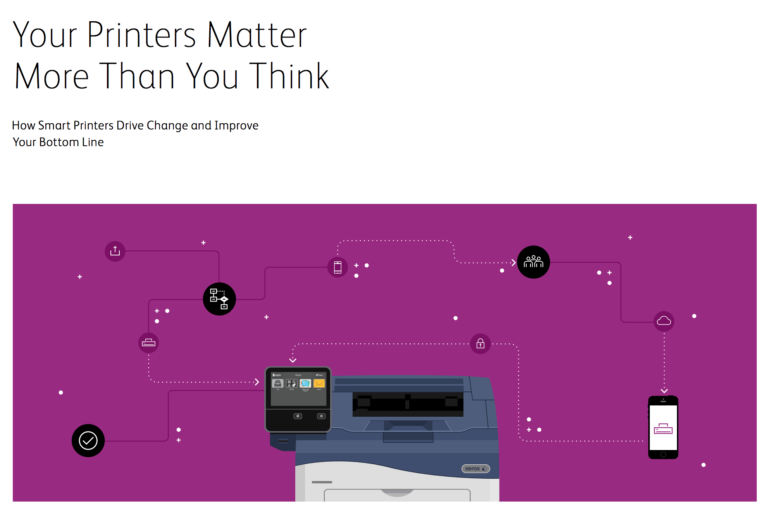Guest post by Chris Wood, Xerox Customer Communication Management Global Offering Manager

Say you have one million customers and lose 20% per year. That’s 200,000 customers gone. Let’s assume it costs $50 to $60 (or more for most sectors) to acquire a new customer. That means your organization would spend millions every year just to stand still!
Not only that, but customer acquisition costs are rarely recovered in the first year, so many organizations need to keep customers for three or more years before they start making money from them. AND you miss out on the referral value of the 200,000 customers lost each year. Some estimates put the value of referrals at 10%. In this example that would mean the loss of an incremental 20,000 customers gained via referral, equal to around a million in acquisition costs!
Emotional Connection Stronger Than User Satisfaction
A Harvard Business Review article, “The New Science of Customer Emotions” suggests that, on a lifetime value basis, emotionally connected customers are twice as valuable as highly satisfied customers. They buy more of your products and services, visit more often, are less price-sensitive, pay attention to your communications and recommend more.
The article cited these examples: After a major bank introduced a credit card for millennials that was designed to inspire emotional connection, use among the segment increased by 70%, and new account growth rose by 40%. Within a year of launching products and messaging to maximize emotional connection, a leading household cleaner turned market share losses into double-digit growth. And when a nationwide apparel retailer reoriented its merchandising and customer experience to its most emotionally connected customer segments, same-store sales growth accelerated more than threefold.
The arguments for creating loyalty are irrefutable. The strategies adopted to build loyalty are questionable, to say the least.
Four Types of Customer Loyalty
In my experience, there are four types of loyalty:
- Inertia – “No one has made me a better offer, and I can’t be bothered to look around.” This type of loyalty often occurs in categories where the product or service is commoditized, and there’s little incentive for consumers to look at. It’s arguable whether brands in this category are really brands or merely labels, as they don’t seem to create any emotional link. Despite the attention that customer churn gets in the telco and insurance industries, the customer base is relatively stable, and inertia plays a key part in retention.
- Fickle – “Frankly, I’ll go where the best offer comes from.” This is not real loyalty. It’s just buying customers for a short period until someone else makes a better offer. Some industries are structured to actively encourage fickleness. Think of the way utilities and other categories make specific offers available to “new customers only.” This shortsighted strategy ultimately backfires and makes the whole category suffer.
- Inherited – “If it was good enough for my parents, it’s good enough for me.” There’s a sense here of not wishing to betray parental values, so many consumers suppress their own views and continue with the opinions expressed by their parents, influencers and peers. Over time, this type of loyalty either erodes to be substituted by another, or grows stronger – morphing into the next level.
- Emotional – “I really like what the brand does and how it treats me – it reflects my values and personality and says something about me that resonates.” Now we’re cooking! Brands that reach this level of engagement get the label, “Love Brands.” It’s only now that the real power of branding is understood as a means to evoke powerful emotional ties that make the consumer impervious to competitive offers.
How to Capture “Emotional Loyalty” Through Customer Experience
- Customer experience and loyalty are intertwined.
Keep the brand’s promise and go the extra mile to create delightful experiences that are relevant and resonate with the consumer. - Create epic experiences.
Exceeding expectation is remembered and savoured long after the sugar rush of a promotional offer wears off. No one doubts that a customer’s brand experience is made up of every interaction they have and even those they don’t have personally, but may have been epic experiences had by friends and influencers.
- Make it personal.

For the consumer, this isn’t business – it’s emotion. Be relevant and understand the context of what the consumer seeks to do. Identify the key drivers of emotional engagement. The piece that’s so often ignored or overlooked is how the consumer is emotionally driven by physiological, psychological, rational, emotional and sensory experiences. For example, experiences like a sense of wellbeing, or belonging to a group, or of thrill and excitement. Pay attention to how the brand and the customer experience fulfil these needs. Give it as much attention as you do creating the “friction-free” experience held out as nirvana.
In the service sector, these interactions are pretty much the totality of the customer experience. Every contact I make with my insurance company, my bank or my utility provider either enhances or diminishes my perception of the brand and validates (or not) the reasons for choosing the brand. (Particularly true when making an insurance claim.) And it’s not just about the channel or technology but about how I was treated and the relevance of the content presented to me. The same goes for the new disruptors like AirBnB, Uber and Lyft. Every time I use (consume) the service, it reinforces and supports my choice.
The product sector is slightly different. Sure, my experience of the journey to purchase is important – in both online and offline worlds, but customer experience is more conditioned by actual product use. Does my mobile actually get good reception where I need it? Is the car I bought really living up to expectation? Does the premium-priced ready meal really taste as good as the packaging suggests?
- Be loyal – Invest in your customers. They are your best brand evangelists
Don’t get enticed by the prospect of short-term promotional gains that appear to disadvantage your existing customers. They are really only illusions and effectively mortgage your future business. Treat your existing customers with respect – provide emotional rewards – not just monetary ones. And while your customers may not all be equal in your eyes, they all have a sense of fairness so treat them all as if they are equal.
How Xerox Helps Turn Customer Experience Into Customer Loyalty
In Xerox, we have helped clients from a range of sectors understand and make emotional connections with their customers using our approach to analytics and personalization. For an airline, we built a program to nurture engagement with the expat community and grow both emotional engagement and increase revenue. A global beverage brand needed to understand more about its consumers’ buying habits in the independent retail channel. Our program helped build more basket value and frequency. And for an auto brand, we increased both showroom traffic and conversion by adopting a more customer-focussed analytical approach to drive personalized communications.
So, the conclusion is:
- Customer Experience and Loyalty are intertwined
- Create Epic experiences – exceeding expectation is remembered long after the sugar rush of a promotional offer wears off.
- Make it personal – for the consumer this is not business – its emotional
- Invest in your customers they are your best brand evangelists
I’d like to know what you’re doing to build customer loyalty through engaging experiences. Share your ideas!




[…] Cette publication a été créée par Chris Wood, “Xerox Customer Communication Management Global Offering Manager” sur le site : https://enterprisematters.blogs.xerox.com […]
[…] Why Does Customer Loyalty Matter? Do The Math. […]
[…] challenge companies face in building loyalty and engagement is getting customer communication right. In a recent post, I wrote about the impact of loyalty and emotional engagement on customer retention and the bottom […]